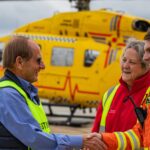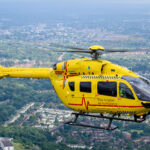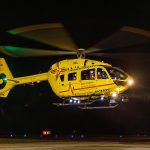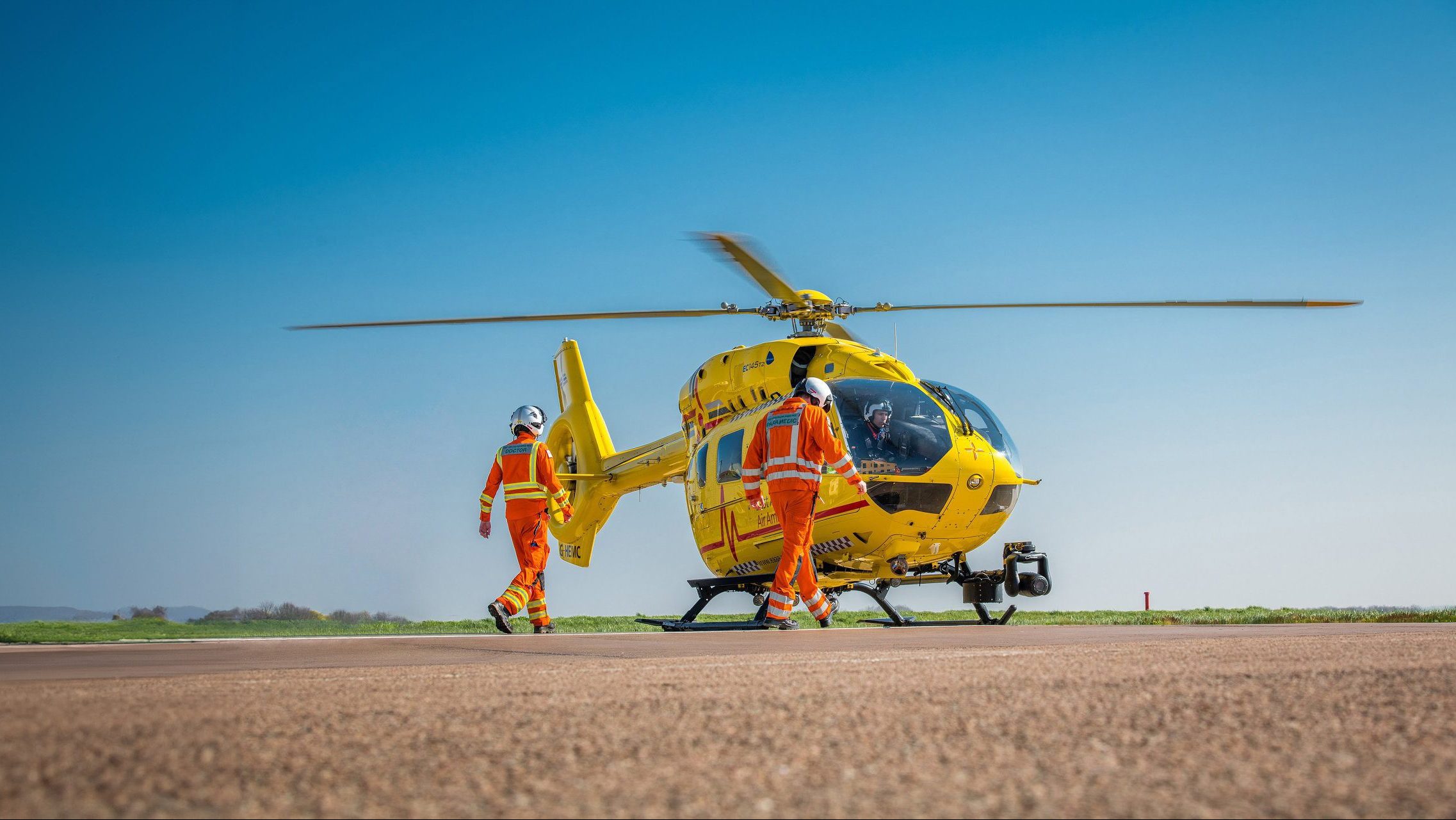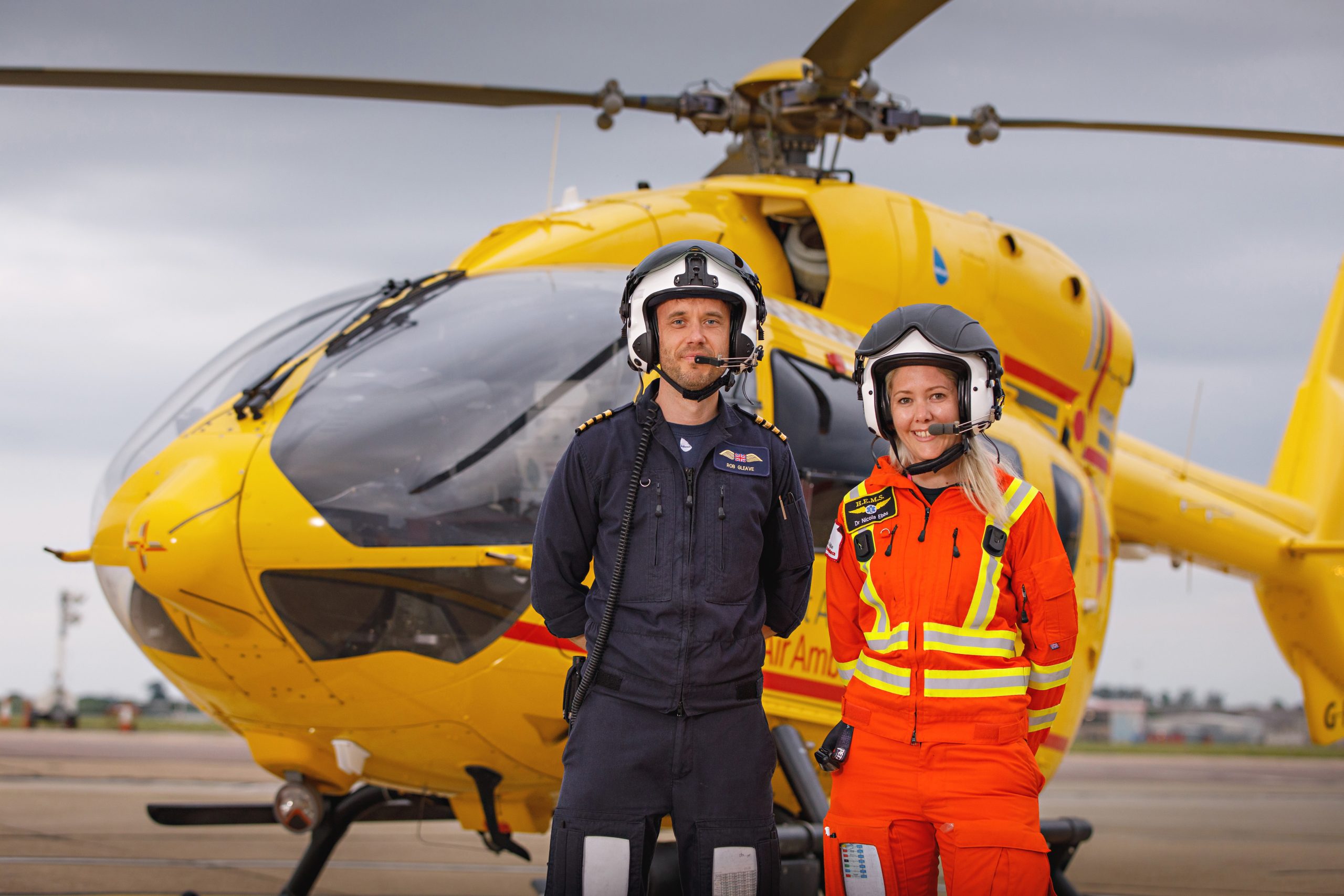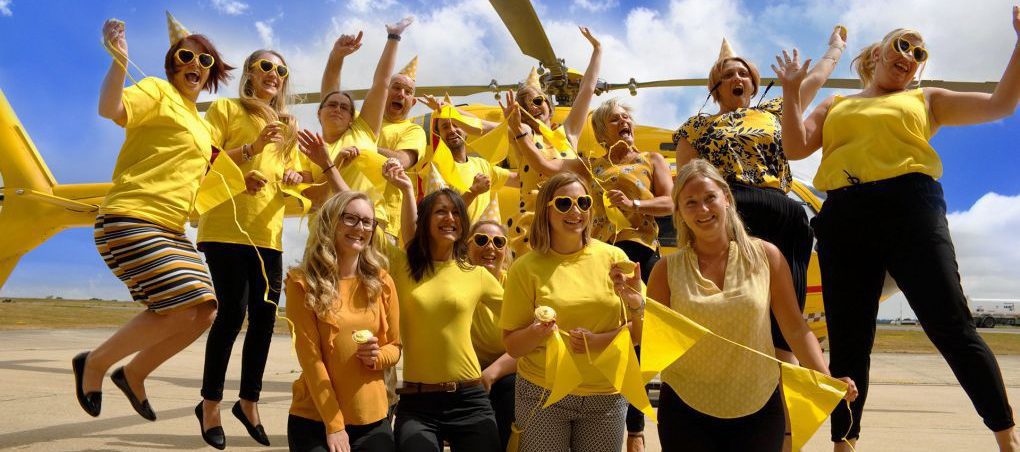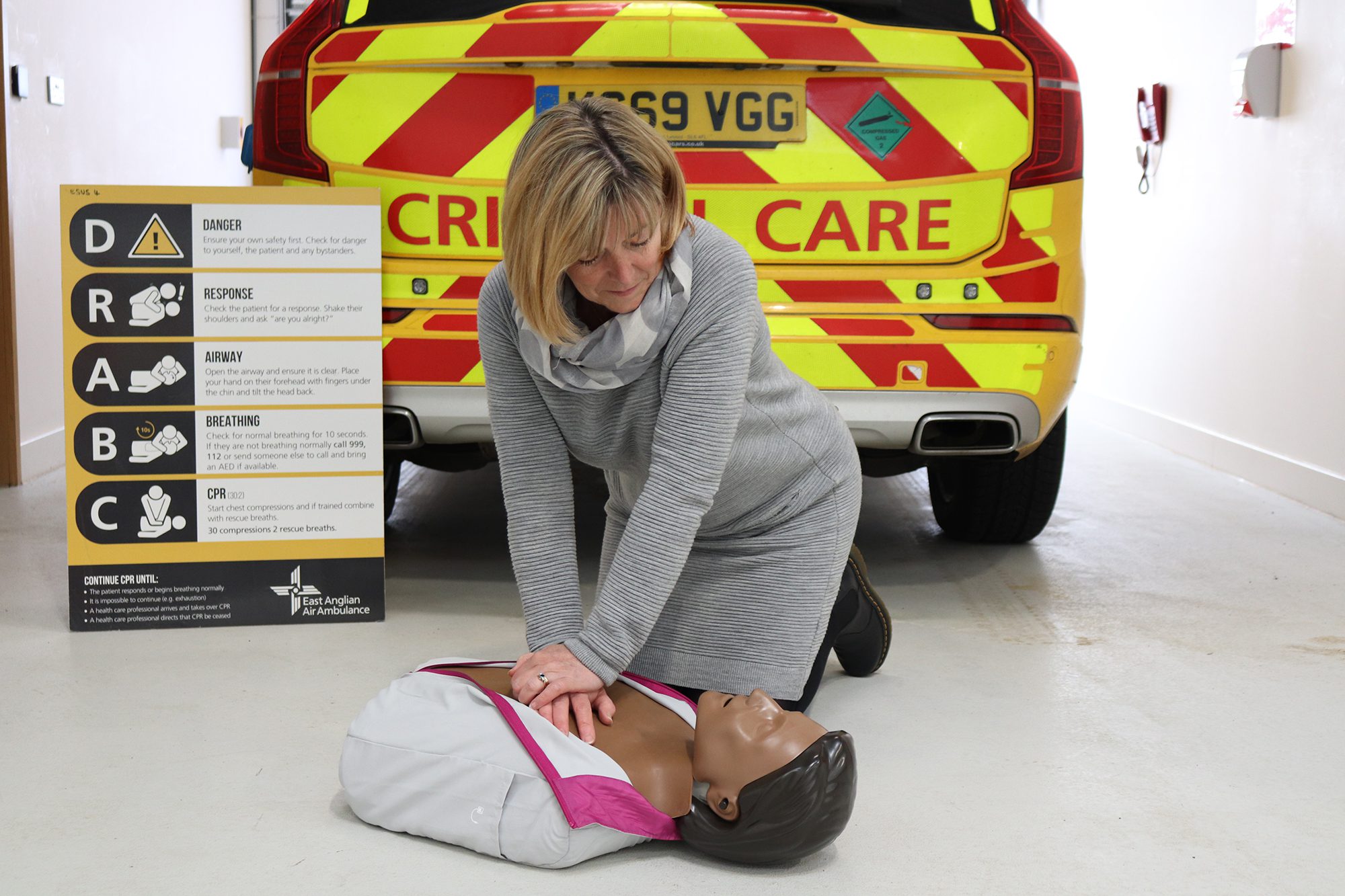18 Sep 2023
POCUS and SPEAR: Behind the acronyms
Last week saw another round of delivery of EAAA's pre-hospital emergency medicine (PHEM) courses in Point-of-care ultrasound (POCUS) and Specialist Percutaneous Emergency Aortic Resuscitation (SPEAR). We spent some time with East Anglian Air Ambulance PHEM Consultant Doctor Jon Barratt, one of the EAAA POCUS and SPEAR course leaders, to go behind the acronyms and learn more about the cutting-edge procedures, and what they mean for our patients and their families.
POCUS: Ultrasound at the patient’s side
The internationally recognised acronym POCUS refers to Point of Care Ultrasound and is a procedure we carry out at the patient’s side. It differs from diagnostic ultrasound as it is used to inform decision-making at the scene of a medical emergency.
“EAAA use POCUS in a variety of medical emergencies, including at the scene of a cardiac arrest.” Dr Jon Barratt explains. “The handheld ‘butterfly ultrasound probe’ can be attached to the crew’s iPad, which acts as the display device so clinicians can see whether there is fluid surrounding the heart and whether it is beating.”
It can also be used to look at other organs, such as the lungs to determine whether they have collapsed as a result of a trauma, or inside a patient’s abdomen to check for internal bleeding.
The difference it makes
“POCUS enables us to be more accurate with our diagnosis at scene and helps us to make more informed decisions about how best to treat patients and perform procedures and interventions in the pre-hospital environment.” Dr Jon Barratt continues.
This includes uploading the scans to a secure cloud system at the scene to enable them to be reviewed by a team of ultrasound specialists at EAAA so they can give feedback to the crew on scene in real-time.
With a more accurate diagnosis, we can also determine the most appropriate hospital to transfer the patient to, for example, to a major trauma centre which has the capabilities to further treat a patient’s injuries or condition. This helps to give people the best chance of surviving and recovering from a life-threatening emergency.
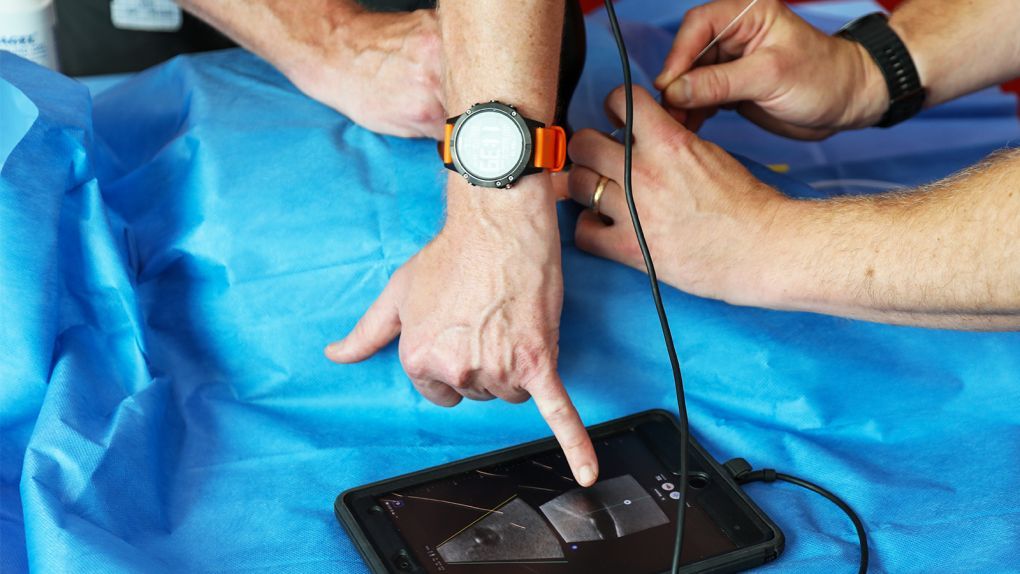
SPEAR: Advanced interventions on-scene for cardiac arrest patients
Using POCUS, we can also carry out our advanced SPEAR procedure at the scene of a medical emergency.
SPEAR refers to Specialist Percutaneous Emergency Aortic Resuscitation, an intervention performed in cardiac arrest patients. It involves inserting needles into the patient’s arteries and veins in the groin to measure blood pressure beat by beat.
The difference it makes
SPEAR helps EAAA clinicians on scene to be more accurate in the management of a cardiac arrest and deliver effective treatment. It can provide real-time feedback regarding the quality of CPR being delivered and ensure adequate blood supply to the patient’s brain and heart.
Dr Jon Barratt says: “It’s an advanced technique and the most technically demanding procedure we carry out, as patients in cardiac arrest would be receiving chest compressions when the needles are inserted.”
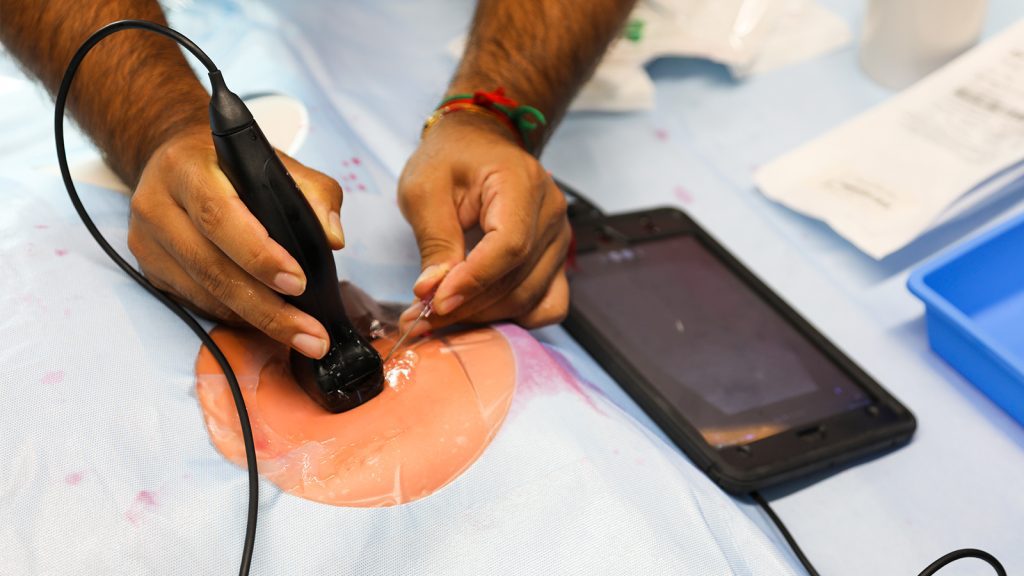
POCUS and SPEAR: Leading the way in innovation and education
At East Anglian Air Ambulance (EAAA), we’re using cutting-edge procedures POCUS and SPEAR to improve patient outcomes, and that includes sharing our knowledge and expertise with others.
We deliver our POCUS and SPEAR courses as part of our RAID (Research, Audit, Innovation and Development) group: “Delegates include critical care paramedics and doctors from EAAA, but also clinicians from other air ambulances and from the NHS, either as an introductory course or confirmation to use the procedures.” Dr Jon Barratt says.
Specific to EAAA, our SPEAR course also attracts international delegates who want to implement the technique further afield. The day courses complement theory with plenty of hands-on practice and simulations to develop skills in the pre-hospital environment.
Dr Jon Barratt concludes. “We’re pleased and proud to see POCUS and SPEAR being used extensively by so many clinicians to benefit patients in what may be the worst moments of their or their families’ lives. We remain so grateful that it is thanks to the support of the public that we are able to lead the way with these innovative interventions to benefit the local community when they need us most.”
